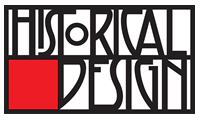Product Description
Tommi Parzinger / American Art Deco Coffee Table circa 1939


TOMMI PARZINGER (1903-1981) Germany/USA
PARZINGER, INC. New York
Coffee table c.1939
Carved and ceruse oak with an incised diamond pattern pewter top
Illustrated: Arts and Decoration, June 1940
***This table was originally priced at $80 during the period, as it appears in the Arts and Decoration vintage illustration from 1940.
For other examples of Parzinger’s work see: Town & Country, Vol. 54, “Counter Points”, December 1939, p. 31; Town & Country, Vol. 95, “Counter Points”, June 1940, p. 19; The Studio, 1938, “For the Table”, p.107-09; The Studio, 1942, “Tommi Parzinger, Designer of Modern Interiors and Silver”, p.37; Decorative Art, Studio Yearbook (London & New York: The Studio Publications, 1952-53), p. 98; Craft in the Machine Age, ed. Janet Kardon (New York: American Craft Museum, 1995) p.128, 134, 183, 241.
H: 12” x L: 42” x D: 14”
Price: $34,500
This is a wonderful and rare coffee table by Tommi Parzinger in beautifully detailed ceruse oak with a diamond pattern pewter inset top. This table was
completely handmade and dates from 1940, shortly after Parzinger opened his first eponymous gallery on East 57th Street. It is low and lean with exquisite Neoclassical Revival carved details and a silhouette that calls to mind an American take on Jean Michel Frank’s sober and refined elegance of the same time period. The cross-hatch carving with tassels on the two long sides and the related top corner details also have a charm reminiscent of Parzinger’s affable personality and effervescent design sensibility.
Tommi Parzinger / American Art Deco Coffee Table circa 1939
JULIA EDNA MATTSON (d.1967) Grand Forks, ND
UNIVERSITY OF NORTH DAKOTA Grand Forks, ND
Vase c. 1913-1920
Earthen-ware with blue-green glaze, incised with lime-green linear decoration
Marks: University of North Dakota, Made at School of Mines, Barclay, Grand forks, ND (Cobalt blue seal), JM (Julia Mattson)
For more information see: Barr, Paul E. North Dakota Artists. Grand Forks: University of North Dakota Library, 1954; Miller, Don. University of North Dakota Pottery: The Cable Years. Grand Forks: University of North Dakota Visual Arts Dept., 1999; Palmer, Bertha Rachael. Beauty Spots in North Dakota. Boston: Bruce Humphries, Inc., 1939
H: 3 5/8″ x Dia: 5 1/4″
Price: $3,250
Julia Edna Mattson worked as an instructor and later as Assistant Professor in the University of North Dakota’s Ceramic department between the years 1924-1963. Her designs reflect an interest in the Arts and Crafts movement in America and American Indian pottery. Early UND pottery is characteristic of the Arts and Crafts and Art Nouveau movement. The decoration of this vessel recalls the graphic designs found on Indian basketry as well as the Prairie School windows of Frank Lloyd Wright.
ANDREE FLAMANT-DUCANY-GIDE (1882-1970) France
VALSUANI FONDEUR (1899-1981) Paris, France
Cubist mask sculpture 20th Century
Cast bronze with rich brown-black patina (possibly cast at a later date by the Valsuani Foundry)
Marks: G. Flamant, 2/8 C. Valsuani Cire Perdue (signed on chin)
H: 11” x W: 7” x D: 5 ½”;
On stand: H: 18 ½”
Price: $35,000
ANDREE FLAMANT-DUCANY-GIDE
Flamant-Gide was born in Nimes, France on January 2nd, 1892 and died on March 28th 1970. She was both a painter and sculptor and exhibited regularly at the Salon des Artists Francais beginning in 1923. She sculpted in an angular Cubist style influenced by African Art and was a fellow artist of Joseph Csaky, Gustave Miklos, Jacques Lipchitz and Henri Laurens who were considered the leading Art Deco sculptors in Paris during the 1920’s.
CUBISM
Cubism drew its influence from: Cezanne’s structural analysis in his oil landscapes, e.g. ‘La Montagne Sainte Victorie’ c.1887; Gauguin’s figurative landscapes, e.g. ‘Haymaking’ 1889; and African tribal Art such as Gabon masks. European artists were greatly influenced by African and Oceanic Art during the late 1890s and early 1900s. African sculpture, with its bold shapes and lines, had a great impact on the development of Cubism. Maurice de Vlaminck became a keen admirer and collector of African masks after seeing them in a Paris anthropological museum. He purchased similar masks and his excitement for these works displaying bold primitive expressions and simplistic design filtered through to Matisse, Derain, Gris and Picasso, who all became collectors as well. By the 1920s African art exhibitions were common in Paris and other cities throughout Europe.
Cubist sculpture brought the simplified shapes of Cubist painting together with the three-dimensional modeling medium of sculpture. The first Cubist sculpture, which could be properly deemed as such was made by Picasso in 1909 and was titled ‘Head of a Woman’. However Picasso did experiment with sculptural forms as early as 1907 when he found himself fascinated and deeply influenced by African masks. Cubist sculpture was mostly reminiscent of Analytical Cubism in its stripping away of illusionist details to reveal the fundamental form contained in each individual subject, be it human or still-life.
VALSUANI FOUNDRY
The Valsuani foundry was started by the brothers Claude and Attilio Valsuani who learned the foundry trade while employed at the Hebrard foundry. While working for Hebrard, Claude Valsuani showed great promise as a finisher and eventually worked his way up to become the Technical Director of the Hebrard foundry. In 1899 Claude Valsuani started his own foundry in Chatillon, casting mostly small works for various artists primarily using the lost wax technique of casting (cire perdue). In 1905 he moved his foundry to 74 Rue des Plantes in Paris. Among the famous sculptors who had the Valsuani foundry cast their works were: Renoir, Picasso, Despiau, Paul Troubetzkoy, Matisse, and Gaugin. Claude Valsuani died in 1923 in his native Italy but his son, Marcele then took over the foundry and continued the tradition of producing extremely fine bronzes until the 1970’s.
